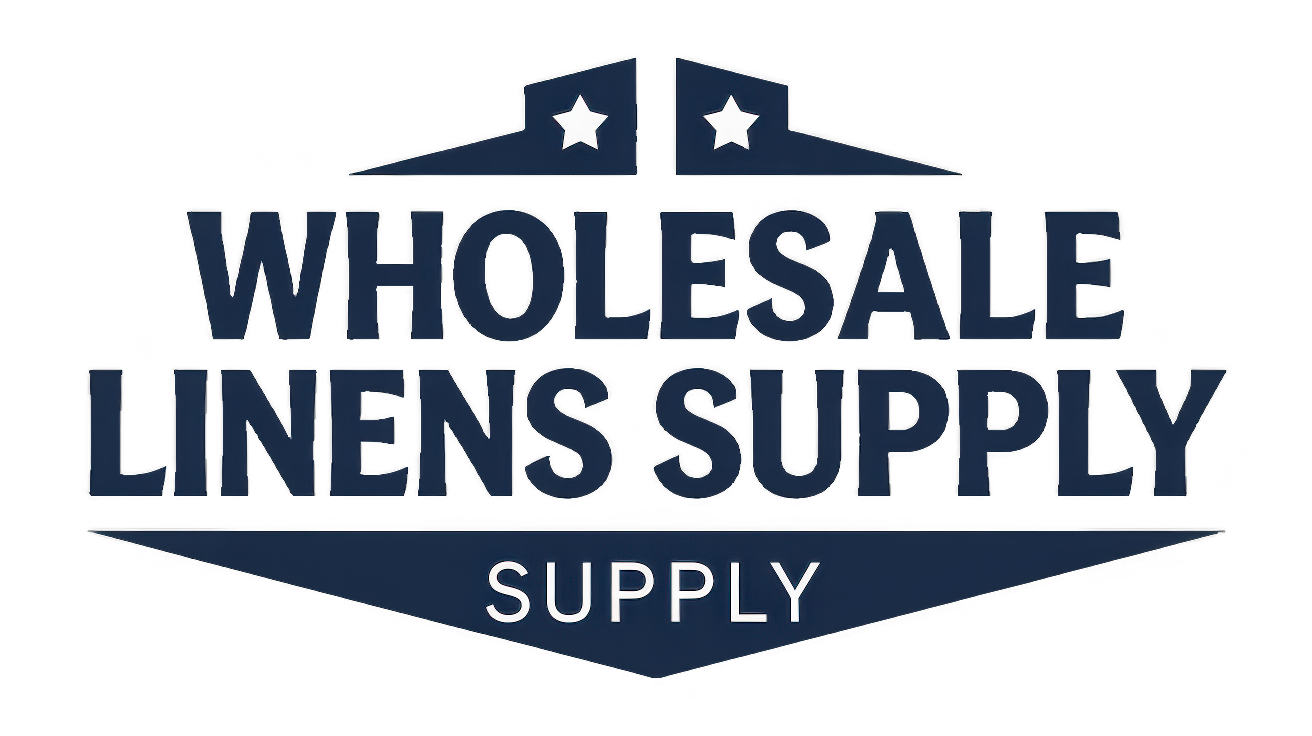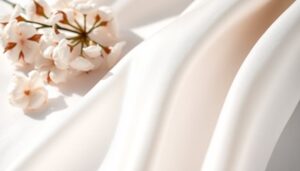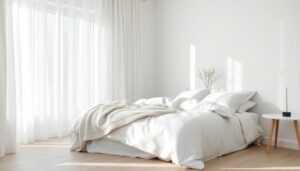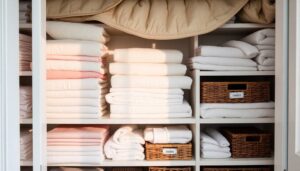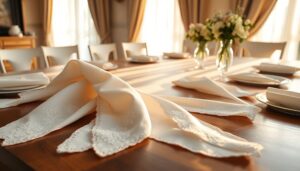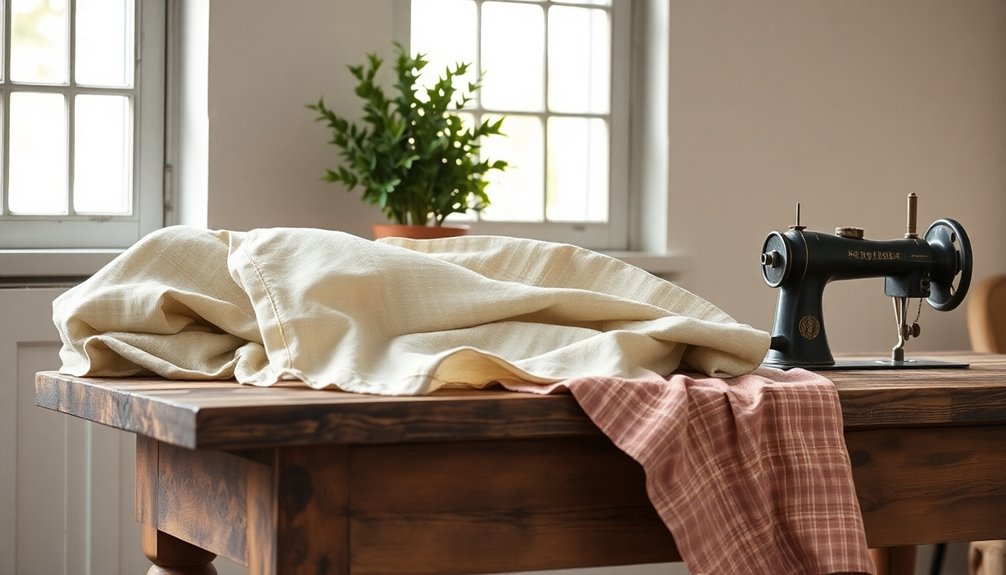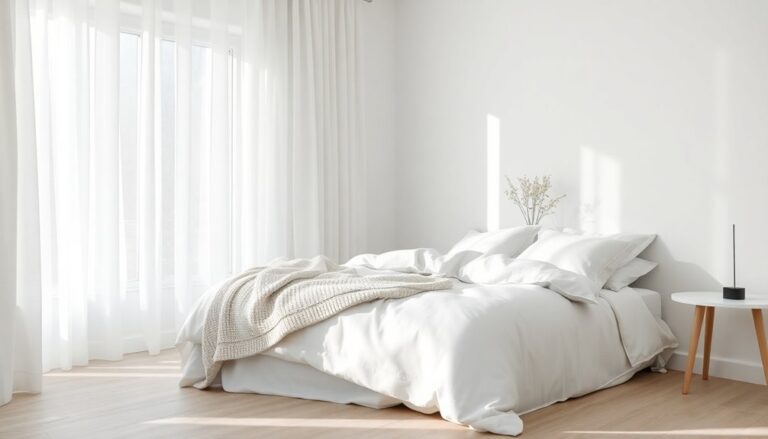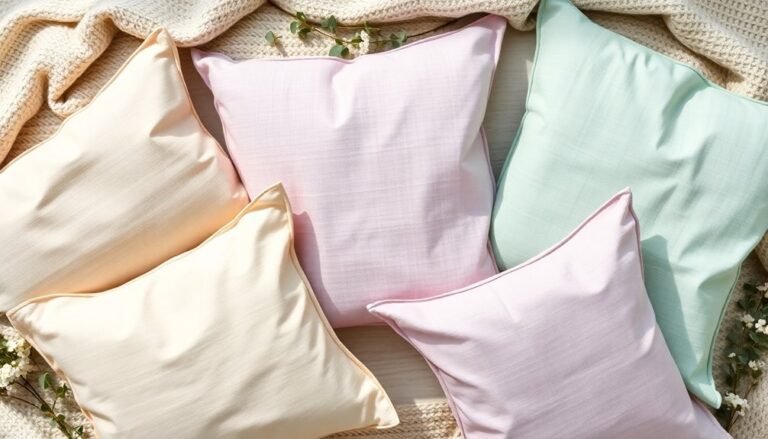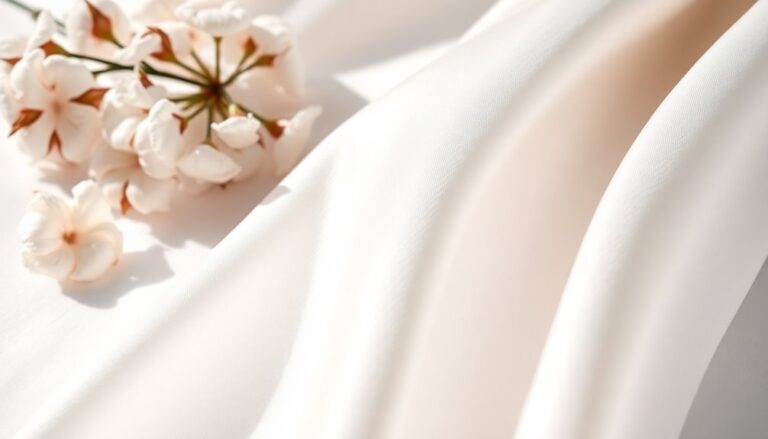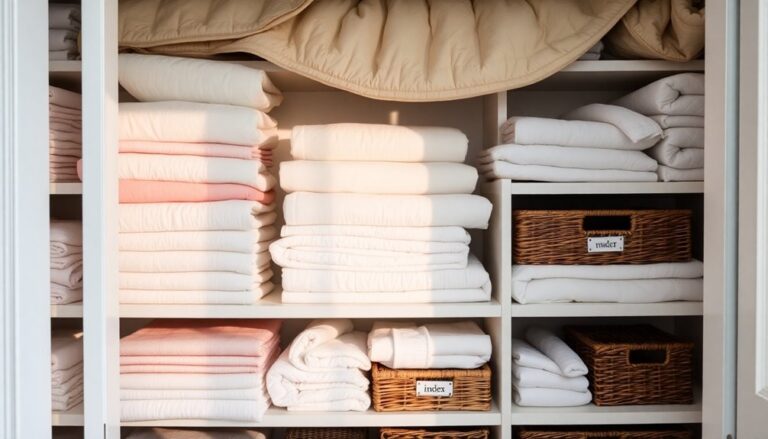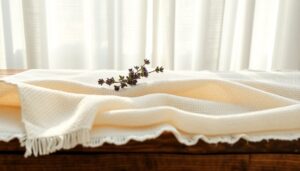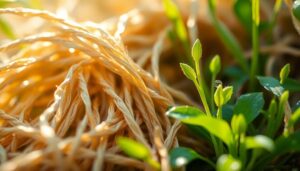European linen brands are celebrated for their rich heritage and commitment to quality. Companies like Libeco offer exquisite craftsmanship and transparency in production. Maison De Vacances reflects French elegance, ensuring timeless designs. Flax & Twine emphasizes eco-friendly practices, appealing to conscious consumers. Furthermore, HAY merges minimalism with functionality in textile design. Each brand combines tradition with contemporary appeal, providing luxurious textiles. There's much more to discover about these remarkable brands and their unique stories.
Article Highlights
- Libeco: Established in 1858, known for high-quality European linen with a strong commitment to sustainability and transparency in production methods.
- Maison De Vacances: Founded in 1888, this brand combines traditional French textile craftsmanship with contemporary designs for elegant dining experiences.
- Flax & Twine: Focuses on eco-friendly material sourcing and organic cultivation, promoting sustainable luxury through artisanal production techniques.
- Timeless Quality: These brands emphasize durability and craftsmanship, ensuring their textiles are luxurious and designed to last.
- Cultural Significance: European linen brands reflect rich heritage and modernity, appealing to customers who value both tradition and innovative design.
The Heritage of Linen: A Brief Overview

Linen has long been cherished for its unique qualities and rich history, dating back thousands of years. Its linen history reveals a fabric that's not just practical but deeply woven into the cultural significance of various societies. From ancient Egypt, where it was used in mummification, to European peasants who relied on its durability for everyday clothing, linen has played a crucial role across civilizations. The fabric symbolizes purity and wealth, often associated with nobility and religious ceremonies. Over time, artisans have mastered the craft of linen production, elevating it to an emblem of quality and sustainability. Today, its enduring appeal reflects a blend of tradition and modernity, making it a sought-after choice in homes and fashion alike.
Brand Spotlight: Libeco
One of the leading names in European linen, Libeco has been crafting high-quality textiles since 1858. The brand stands out for its commitment to Libeco sustainability, utilizing eco-friendly practices throughout its production processes. With a focus on Libeco innovations, the company continually integrates modern techniques during respecting traditional craftsmanship.
| Feature | Description | Benefit |
|---|---|---|
| Eco-friendly materials | Organic and natural fibers | Reduced environmental impact |
| Artisan craftsmanship | Handcrafted techniques | Unique, durable products |
| Modern designs | Contemporary styles | Versatile home decor |
| Transparency | Open supply chain | Trust and accountability |
Libeco's dedication to quality and sustainability makes it a preferred choice for those seeking elegant and responsible linen products.
The Artisan Touch: Maison De Vacances
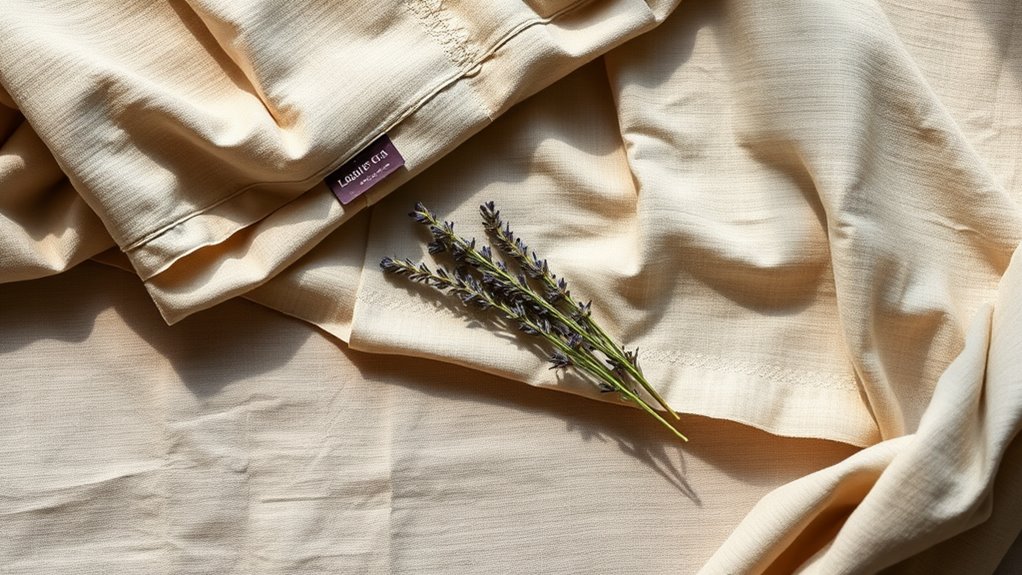
Maison De Vacances embodies the essence of artisanal craftsmanship through its commitment to ethically sourced materials. Their timeless design aesthetic showcases a blend of traditional techniques and modern sensibilities, making each piece unique. Handcrafted production techniques further improve the brand's dedication to quality and sustainability, setting it apart in the realm of linen.
Ethically Sourced Materials
As many brands focus solely on aesthetics, The Artisan Touch: Maison De Vacances stands out by prioritizing ethically sourced materials in its production process. Committed to sustainable practices, this brand guarantees that every piece of linen is crafted with care for the environment and the communities involved. By using eco-friendly textiles, they not only diminish their ecological footprint but additionally promote fair labor practices. This dedication to ethical sourcing reflects a broader trend in the industry, where consumers increasingly seek transparency and responsibility in their purchases. Maison De Vacances proves that beautiful design and ethical integrity can coexist, making it a standout choice for those who value both style and sustainability in their home textiles.
Timeless Design Aesthetic
Though many brands chase fleeting trends, The Artisan Touch: Maison De Vacances captures a timeless design aesthetic that effortlessly blends classic elegance with contemporary flair. Their collections showcase classic styles reimagined through modern interpretations, appealing to those who appreciate both tradition and innovation. Each piece reflects a deep respect for craftsmanship as it maintains a fresh, inviting look. The brand's use of natural, high-quality linens elevates this aesthetic, allowing for versatile pieces that fit seamlessly into various home environments. From understated table linens to striking bedding, Maison De Vacances proves that timeless design doesn't conform to seasonal whims. Instead, it celebrates enduring beauty, making it a favorite among those who seek sophistication without sacrificing comfort.
Handcrafted Production Techniques
Though many brands rely on mass production, The Artisan Touch: Maison De Vacances prides itself on using handcrafted production techniques that highlight traditional craftsmanship. This commitment guarantees each piece reflects the brand's dedication to quality and artistry. By integrating innovative weaving methods, they create stunning linen products that stand out in a crowded market.
Key aspects of their approach include:
- Utilization of eco-friendly materials
- Emphasis on artisanal skills passed down through generations
- Unique patterns inspired by nature
- Attention to detail in every stitch
- Collaboration with local craftsmen
Through these practices, Maison De Vacances offers not just linen, but an experience that celebrates the beauty of handcrafted elegance.
Contemporary Chic: HAY

In the domain of contemporary chic, HAY stands out as a brand that seamlessly blends functionality with striking design. Known for its commitment to contemporary trends, HAY creates pieces that embody minimalist aesthetics, making them perfect for modern living. Their collections feature elegant lines and thoughtful details, ensuring that each item not just looks good but additionally serves a purpose. From linen textiles to furniture, every product reflects a dedication to quality and innovation. HAY's designs invite individuals to embrace simplicity whilst adding a touch of sophistication to their spaces. By prioritizing both visual appeal and practicality, HAY has carved a niche in the sphere of design, appealing to those who appreciate a refined yet approachable style.
Sustainable Luxury: Flax & Twine
In the domain of sustainable luxury, Flax & Twine stands out with its commitment to eco-friendly material sourcing. Their focus on artisanal production techniques guarantees that each piece is crafted with care, reflecting a timeless design aesthetic. This brand exemplifies how luxury can align with environmental responsibility.
Eco-Friendly Material Sourcing
As consumers increasingly prioritize sustainability, European linen brands are embracing eco-friendly material sourcing, particularly through the cultivation of flax and twine. These brands implement sustainable practices that emphasize environmental responsibility as they offer luxurious products.
Key aspects of their eco-friendly sourcing include:
- Organic flax cultivation: Reduces chemical use and promotes biodiversity.
- Water-efficient farming: Minimizes resource consumption during cultivation.
- Local sourcing: Supports regional economies and reduces transportation emissions.
- Eco certifications: Guarantees adherence to recognized sustainability standards.
- Waste reduction initiatives: Focus on repurposing by-products and minimizing waste.
Artisanal Production Techniques
Artisanal production techniques are at the heart of European linen brands, enhancing the sustainable luxury of flax and twine. These methods reflect a deep commitment to textile innovation and sustainable craftsmanship, ensuring that each piece is not just a product, but a story of tradition and care.
| Technique | Impact on Sustainability |
|---|---|
| Hand Loom Weaving | Reduces energy consumption |
| Natural Dyes | Minimizes chemical use |
| Traditional Spinning | Preserves local craftsmanship |
| Small Batch Production | Decreases waste and overproduction |
Timeless Design Aesthetics
Timeless design aesthetics in European linen brands seamlessly blend functionality with elegance, ensuring that each piece is both beautiful and enduring. These brands embody the essence of sustainable luxury, focusing on timeless textiles that enhance everyday experiences. Their minimalist aesthetics promote simplicity as well as enhancing the beauty of the fabric.
- Emphasis on natural fibers
- Neutral color palettes
- Versatile designs for various settings
- Eco-friendly production methods
- Durability for lasting use
Timeless Elegance: Le Jacquard Français
Though many brands strive for innovation, Le Jacquard Français stands out by embracing the rich heritage of French textile craftsmanship. Known for its luxurious textiles, the brand combines traditional techniques with contemporary designs, resulting in pieces that exude timeless elegance. Founded in 1888, Le Jacquard Français carries significant historical weight, reflecting the artistry of generations past. Its intricate patterns often draw inspiration from nature and French culture, making each item not just a product, but a narrative woven into fabric. Customers appreciate the blend of quality and aesthetic appeal, which enhances everyday dining experiences. By honoring its roots as it pushes creative boundaries, Le Jacquard Français continues to be a prominent name in the realm of luxury linens, enchanting those who value both history and design.
Frequently Asked Questions
What Is the Difference Between Linen and Cotton Fabrics?
When comparing linen and cotton fabrics, one can see distinct differences. Linen benefits from its breathability and moisture-wicking properties, making it ideal for warm weather. It’s furthermore more durable than cotton, which tends to wear out faster. Conversely, cotton advantages include its softness and versatility, making it a popular choice for everyday clothing. Both fabrics have unique qualities, but the choice often depends on personal preference and intended use. Additionally, linen tends to have a crisp texture that softens over time, while cotton is naturally smooth from the start. When selecting linen fabric, considering the best thread count for linen is essential, as a lower thread count allows for better airflow, enhancing its cooling properties. Ultimately, the decision between linen and cotton depends on factors such as climate, comfort preferences, and durability needs.
How Should I Care for Linen Products?
When she stumbled upon a beautiful linen tablecloth, she wondered how to care for it. To guarantee fabric longevity, it's best to wash linen products in cold water using a gentle cycle. She should avoid bleach and opt for mild detergents. Air drying's preferable, but if she uses a dryer, low heat's key. For wrinkles, a warm iron can help. Following these laundry tips keeps linen looking fresh and lively for years to come.
Where Can I Buy These European Linen Brands Online?
As far as buying European linen brands online, there are several European retailers that offer a wide range of products. Many of these retailers have user-friendly websites, making online shopping convenient. Customers can explore options from established brands known for their quality linen. It's prudent to check for customer reviews and shipping policies to guarantee a satisfactory experience. Overall, online shopping for linen is increasingly accessible and enjoyable for those seeking high-quality items.
Is Linen Suitable for All Seasons?
Linen's like a chameleon, effortlessly adapting to every season. Its breathability benefits make it ideal for summer, allowing air to flow and keeping wearers cool. In cooler months, layering with linen provides warmth without sacrificing comfort. This seasonal fashion versatility guarantees that linen's not just a warm-weather staple; it's a year-round companion. Many appreciate how it blends style and practicality, proving that linen truly fits every wardrobe and occasion.
What Makes Linen Eco-Friendly Compared to Other Fabrics?
Linen's eco-friendliness stems from its sustainable practices and minimal environmental impact. The flax plant requires less water and no pesticides, making it a more environmentally friendly choice compared to other fabrics. Its durability means linen lasts longer, reducing the need for frequent replacements. Moreover, linen is biodegradable, further lessening its ecological footprint. By choosing linen, consumers support a fabric that aligns with eco-conscious values and promotes a healthier planet.
